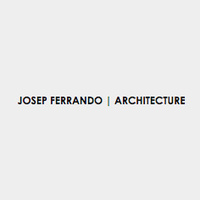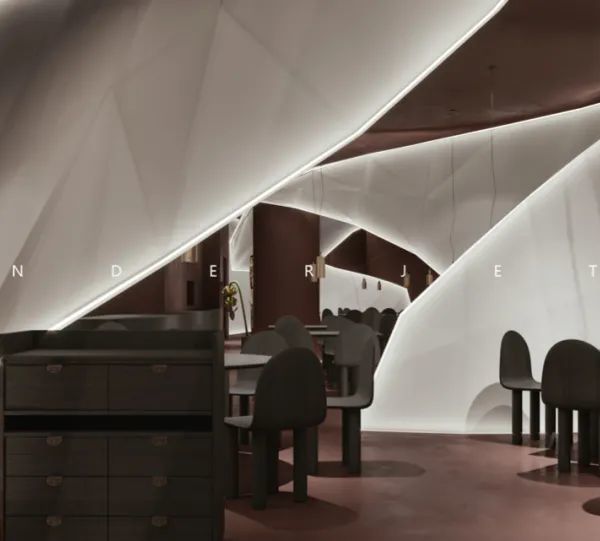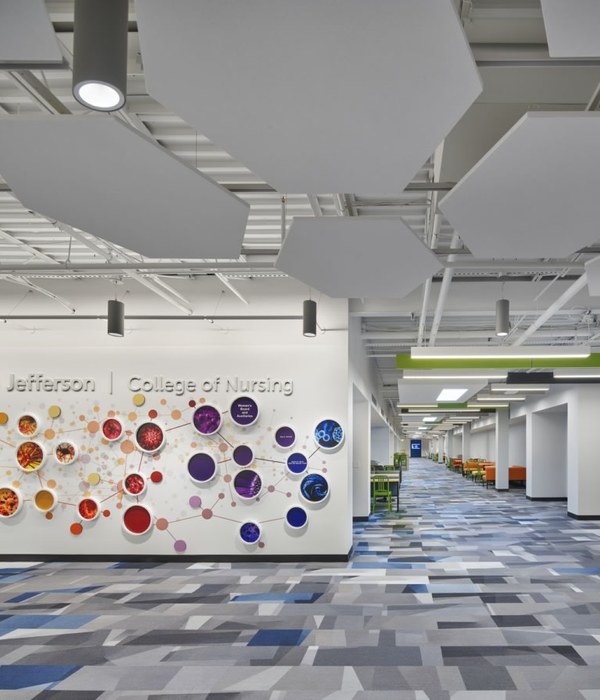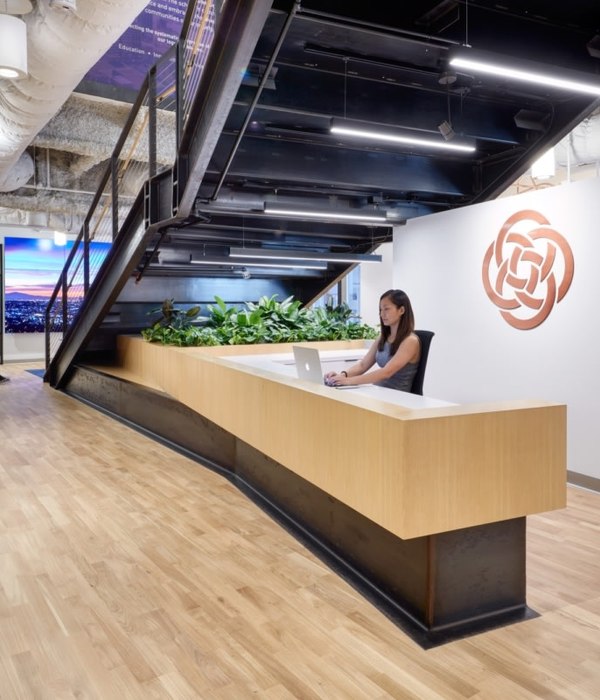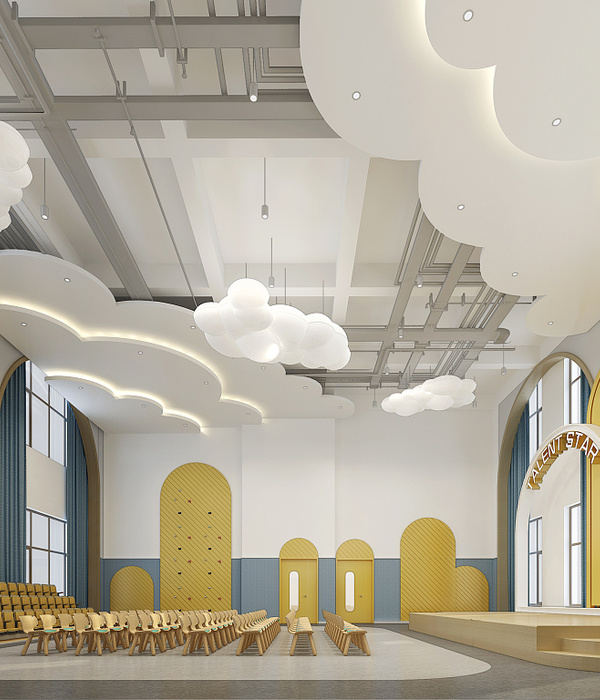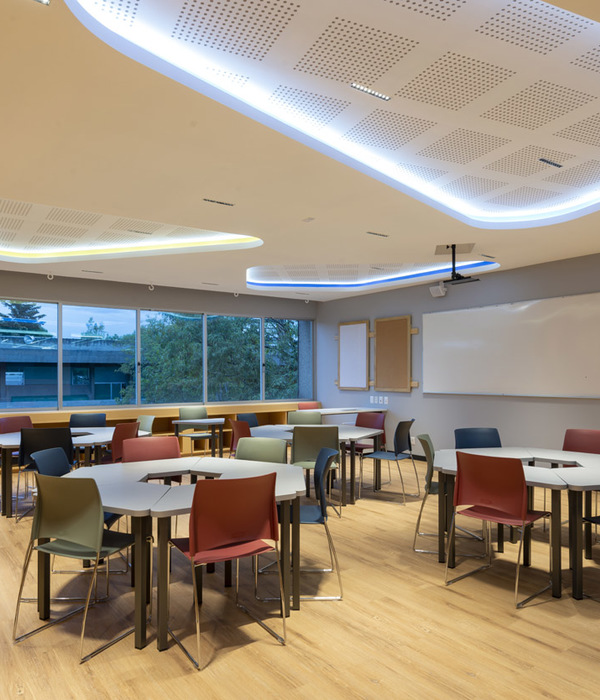埃布罗河畔的绿色校园 | URV 大学校园设计
© Pedro Pegenaute
佩德罗·佩佩诺特
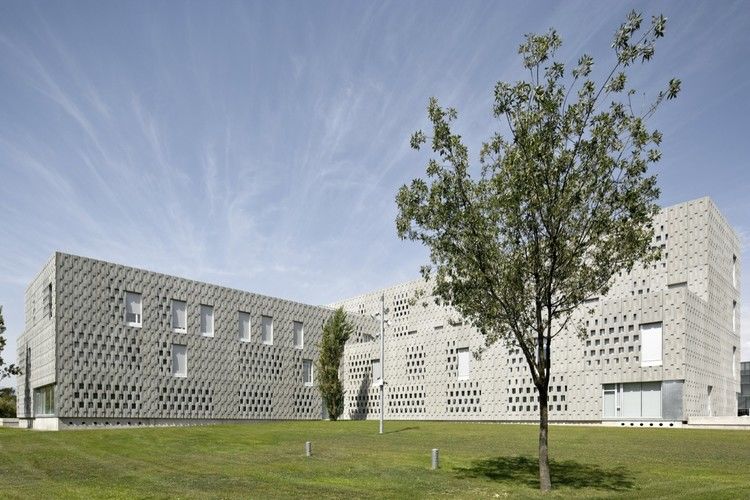
“Terres del l‘Ebre”校园的新建筑位于城市以北的 Tortosa 公平地带,位于埃布罗河和雷莫林区之间。
The new building of the "Terres del l’Ebre" Campus is located in the area of the Tortosa Fairground, to the north of the city, situated between the Ebro river and the district of Remolins
Implantation

这个位置特别吸引人,因为它的复杂性。它是一个具有代表性和明确可作为城市框架的基础。在公园和城市之间的中间,该建议旨在使自然环境和城市环境之间的过渡更加顺畅。一方面,我们可以在树的中间发现新的建筑,作为一个支离破碎和不连续的部分,以便于与周围的公园融合。从另一方面看,相反,它能够提供一个更紧凑的城市外观,覆盖城市的地形,假定城市的通常高度。
The location is especially attractive because of its complexity. It is a representative and clearly identifiable ground as an urban framework. Halfway between the park and the city, the proposal aims to smooth the transition between the natural and urban surroundings. On the one hand, we can discover the new building in the middle of the trees, as a fragmented and discontinuous piece to allow easy integration with the surroundings of the park. From the other side, on the contrary, it is able to offer a more compact urban facade that overlies the urban topography assuming the usual height of the city.

由于有洪水的危险,它的沉降平台位于公园的上限。公园和建筑之间的尺寸差异是通过一系列的坡道来解决的,这些坡道给公园的空间提供了连续性。
Its settlement platform is at an upper limit of the park due to the risk of flooding. The difference of dimensions between the park and the building is solved through a series of ramps that give continuity to the space of the park. © Pedro Pegenaute
佩德罗·佩佩诺特
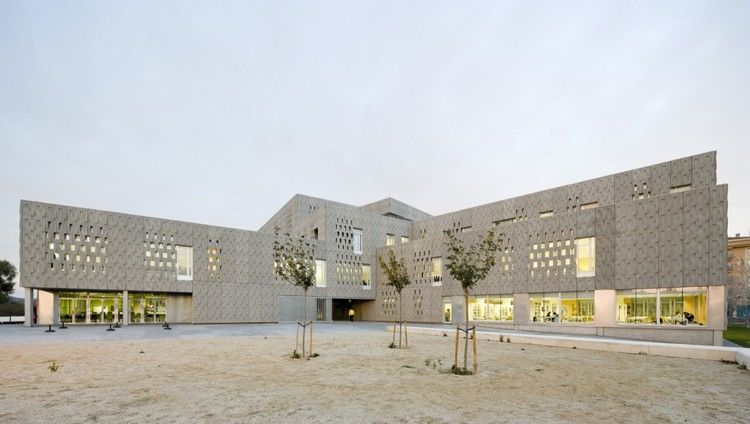
建筑The Building
在计划中,建筑物离开街道,以获得必要的周边规划,同时可以很容易地通过。相反,什么将代表一个障碍建筑,布局方便的对角线路线,并允许将公园与连接城市和游乐场的大道联系起来。新校区想要成为公园的大门,创造一个开始和结束,并且,吃尽了这段时间,成为这条大道的前厅。这种位置的二重性是其植入的特征。
In plan, the building moves away from the street to obtain the necessary perimeter for the layout of the program and at the same time can be easily traversed. Contrarily, what would represent a barrier-building, the layout facilitates the diagonal routes and allows to relate the park wiith the avenue that connects the city and the fairground. The new campus wants to be the door of the park creating a beginning and an end and, at the same time, be the antechamber of the mentioned avenue. This duality of location characterizes its implantation.
Floor Plan
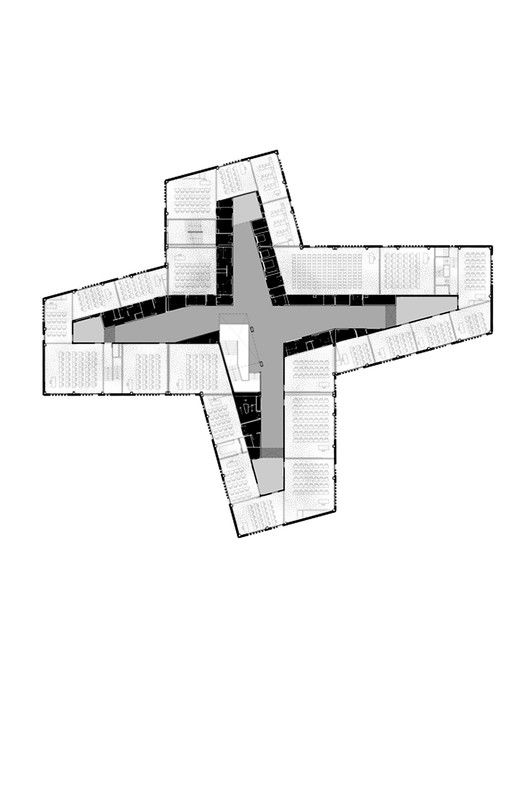
The program
计划表单允许您为所请求的程序设置良好的布局。外部画廊按主题区域分组,减少内部流通,尽量减少走廊,并生成方形或小的关系空间。在这些公共空间和位于外观中的特定用途空间之间,它们是一个可变厚度的元素,用作过渡和筛选。包含支持空间,如浴室,设施,露台,票房等。促进吸声。
The plan form allows you to set a good layout of the requested program. External galleries are established grouping by thematic areas, reducing the interior circulation, minimizing the corridors and generating squares or small relation spaces. Between these common spaces and those of specific uses located in the facade there is an element of variable thickness that serves as transition and filter. Contains support spaces such as bathrooms, facilities patios, box office, etc... promoting acoustic absorption.
© Pedro Pegenaute
佩德罗·佩佩诺特
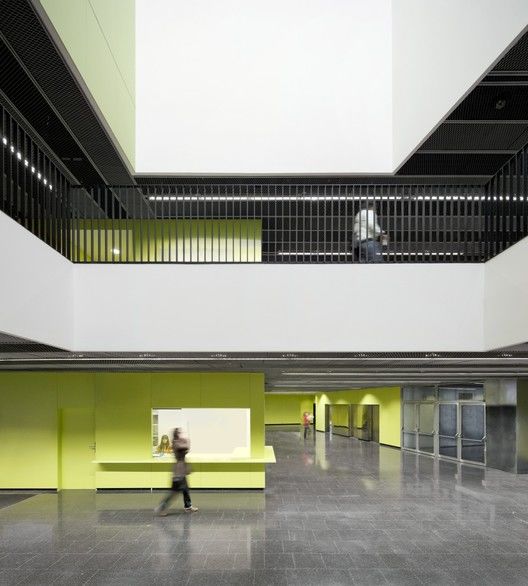
该部分的目的是在这些战略空间中将自然光带到建筑中心,作为循环空间的末端。此外,它还允许将最公开或最公开的节目设在大厅的底层,那里有展览空间,图书馆与计算机空间、自习室和酒吧相连。在一楼有三种类型的教室,其中有教学需要,而在二楼是位于教师的房间。最后,三楼除了大学扩建空间外,还有管理室。
The section aims to bring natural light to the center of the building in those strategic spaces as the end of the circulation spaces. In addition, it allows to locate the most public or open program on the ground floor where the hall is located with the exhibition space, the library connected with the computer spaces, the study room and the bar. In the first floor there are three types of classroom that houses the teaching needs, while in the second floor are located the teacher’s room. Finally, the third floor houses the management room along with the university extension spaces.
Axonometrics
axonometric(几何学上)轴测法
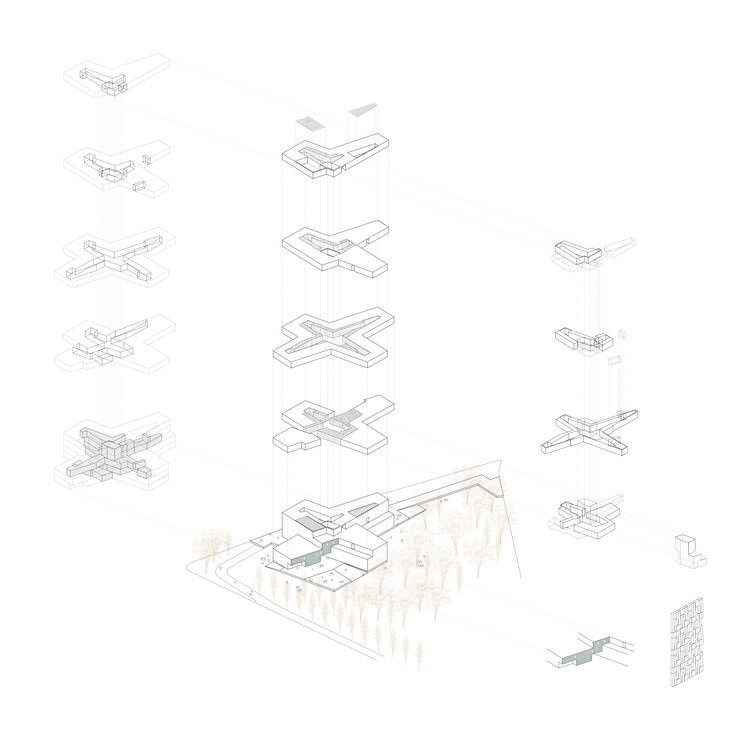
结构The Structure
该项目共同建造了一座建筑,当在平面图中看到一颗星星的形状时,它的中央身体实际上是正方形的,而膨胀的连接处就在这里。中心身体周围有五个独立结构的过道。
The project comtemplates the construction of a building that presents the shape of a star when seen in the floor plan, with a central body practically square, where the dilatation joint is located. Around the central body are arranged five aisle with independent structures.
© Pedro Pegenaute
佩德罗·佩佩诺特
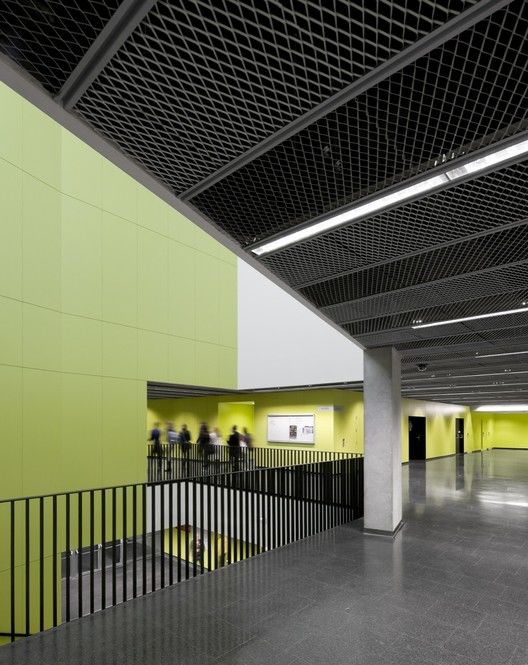
在金属周围区域,设计了一种单向衬砌方案,后张肋支撑在扁梁上。
In the perimetal zones a unidirectional lining solution was planned with post-tensioned ribs supported on flat beams.
Planta en Vista Ojo de Pez
Planta en Vista Ojo de Pez
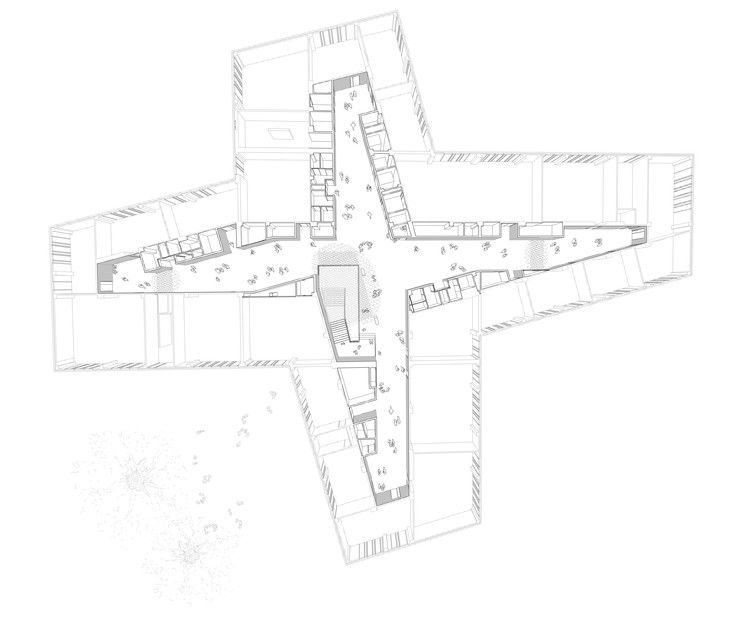
在中心区,基本上注定了公共区域之间的分布和垂直交通,灯被放置在 9,60m 的柱子之间,在两个方向上。通过这种照明,规划了一个网状衬里。
In the central zone, basically destined the distribution and vertical communication between common areas, lights are positioned between the pillars of 9,60m in two directions. Through this illumination, a reticular lining was planned. © Pedro Pegenaute
佩德罗·佩佩诺特

环境The Surroundings
表面上,它是通过一个模块化的混凝土涂层,以保证外观的连续性。这两种尺寸为 1.20×4.20m 的零件被区分开来:一种是不透明的面板,另一种是过滤光线的旋转面板。根据室内空间的需要,我们可以找到不透明的部分,或者格子,或者两者都找不到,这样我们就可以发现公园和城市的不同观点。
Outwardly it was through a modular concrete coating that guarantees the continuity of the facade. The two types of pieces with dimensions 1.20 x 4.20m are differentiated: an opaque panel and a trellised panel that sifts the light. According to the needs of the interior spaces we can find the opaque piece, the piece of trellis or neither, so that we can discover the different views regarding the park and the city.
Section Details
章节细节
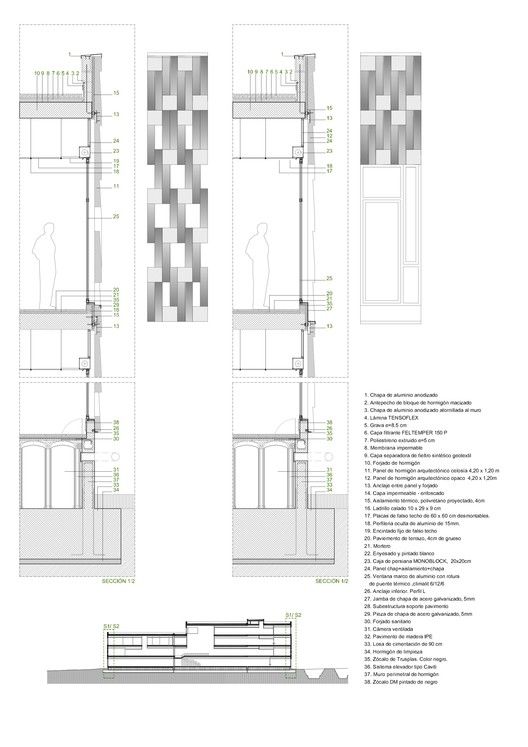
在地面门廊区域,在镀锌钢板的陶瓷密封件上涂上一层涂层,在也是用镀锌钢型材制成的支撑系统上涂上一层涂层。
In the area of the ground access porch, a coating is placed on the ceramic seal of galvanized steel plates, on support system also made with galvanized steel profiles.
© Pedro Pegenaute
佩德罗·佩佩诺特
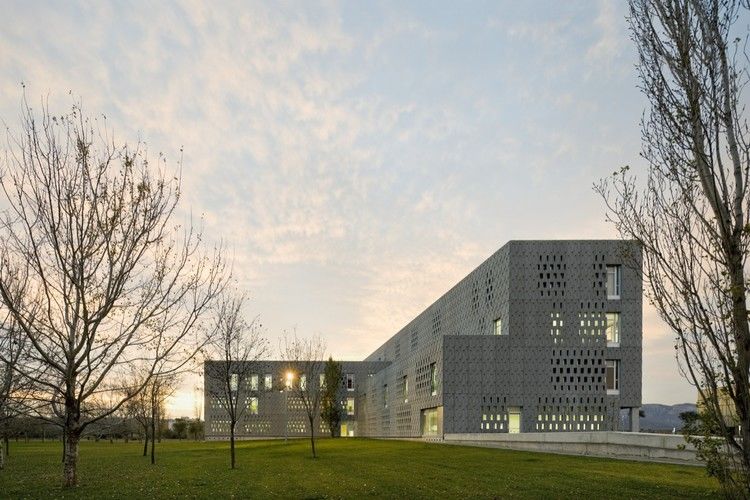
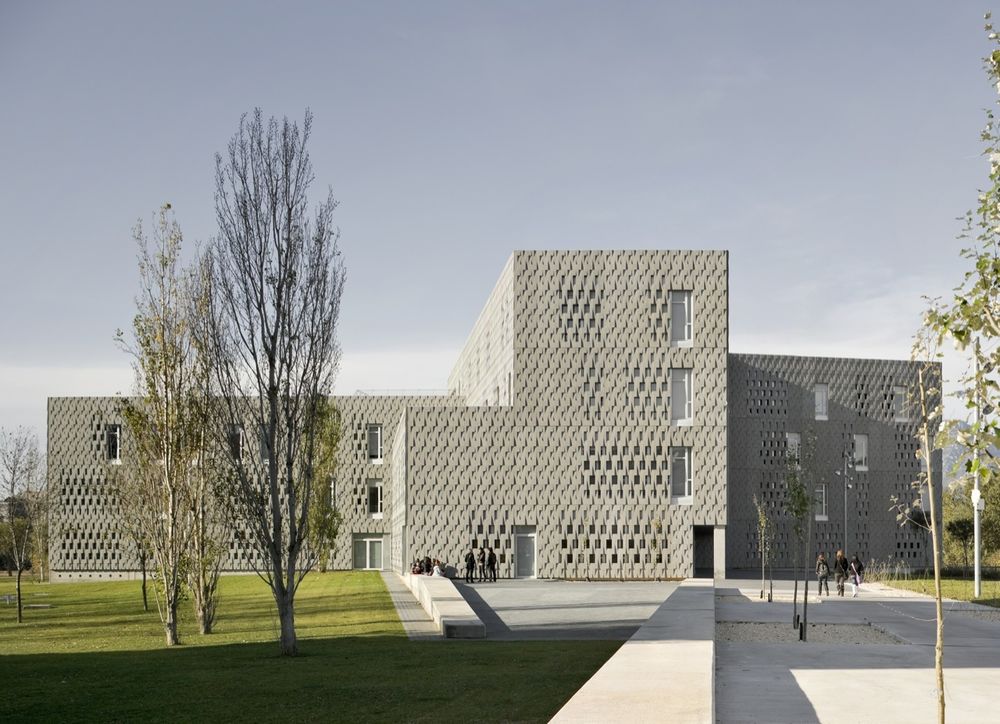
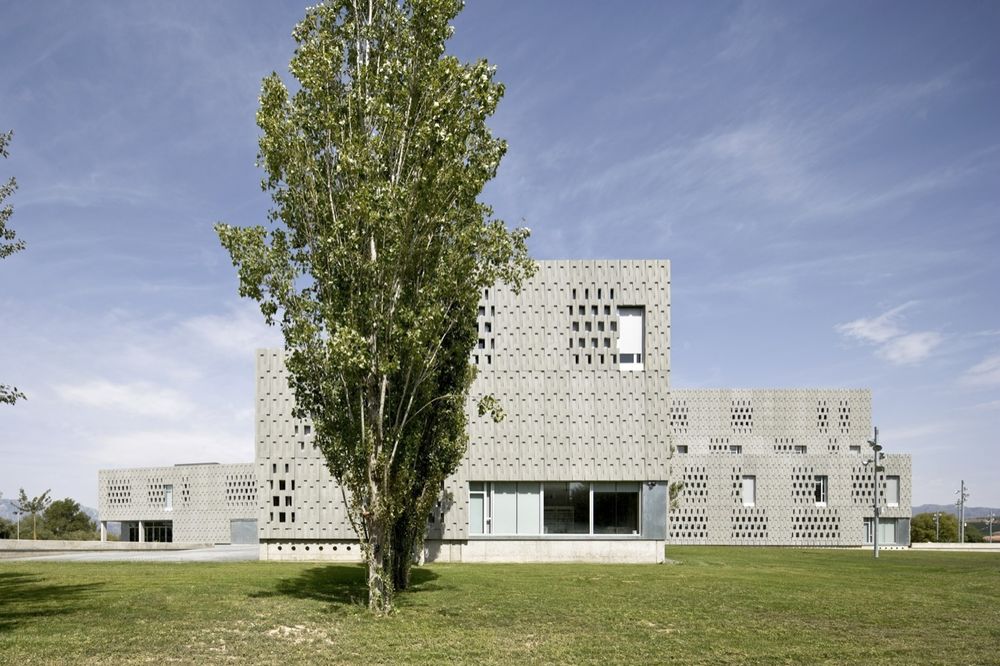

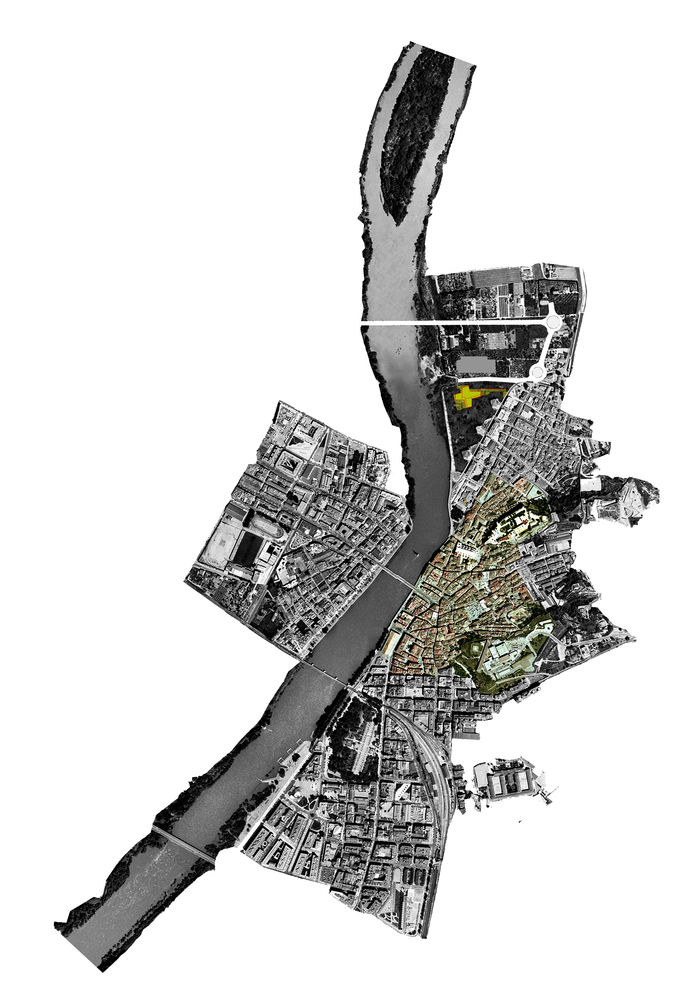
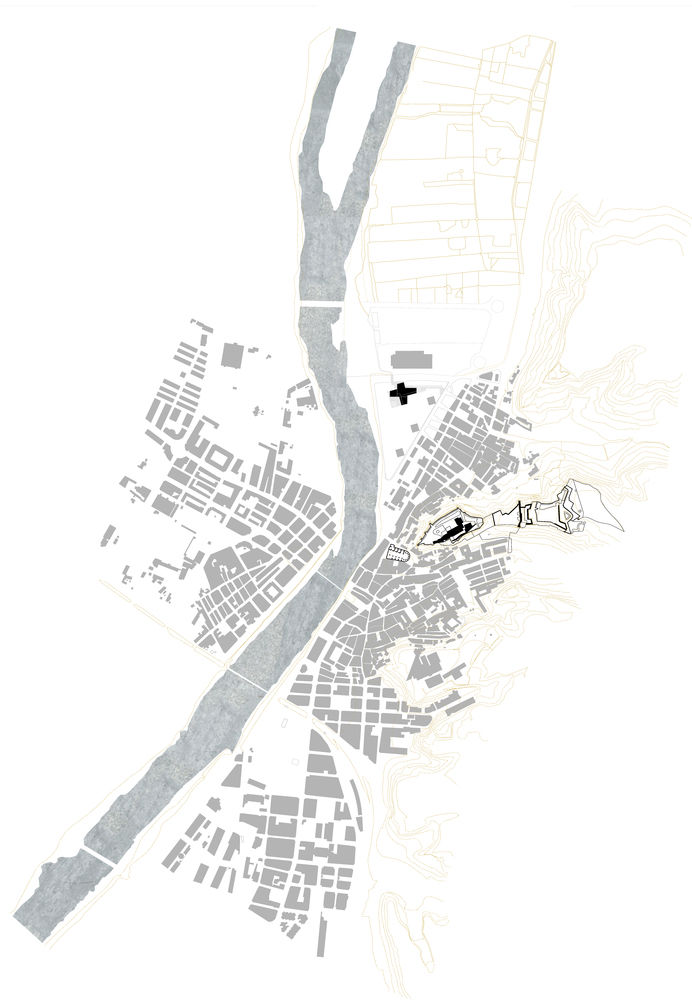
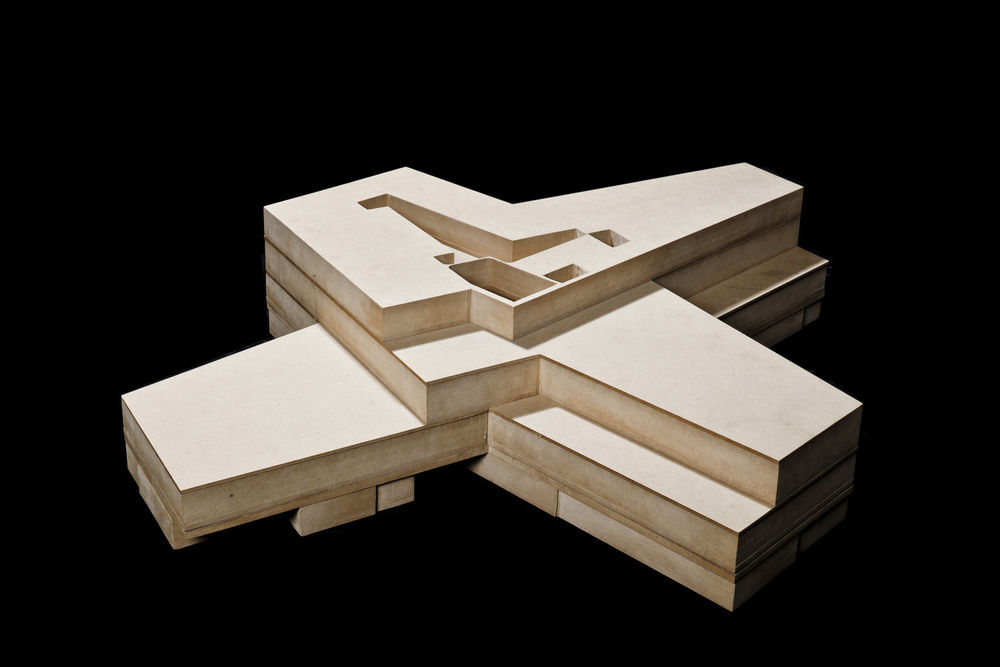
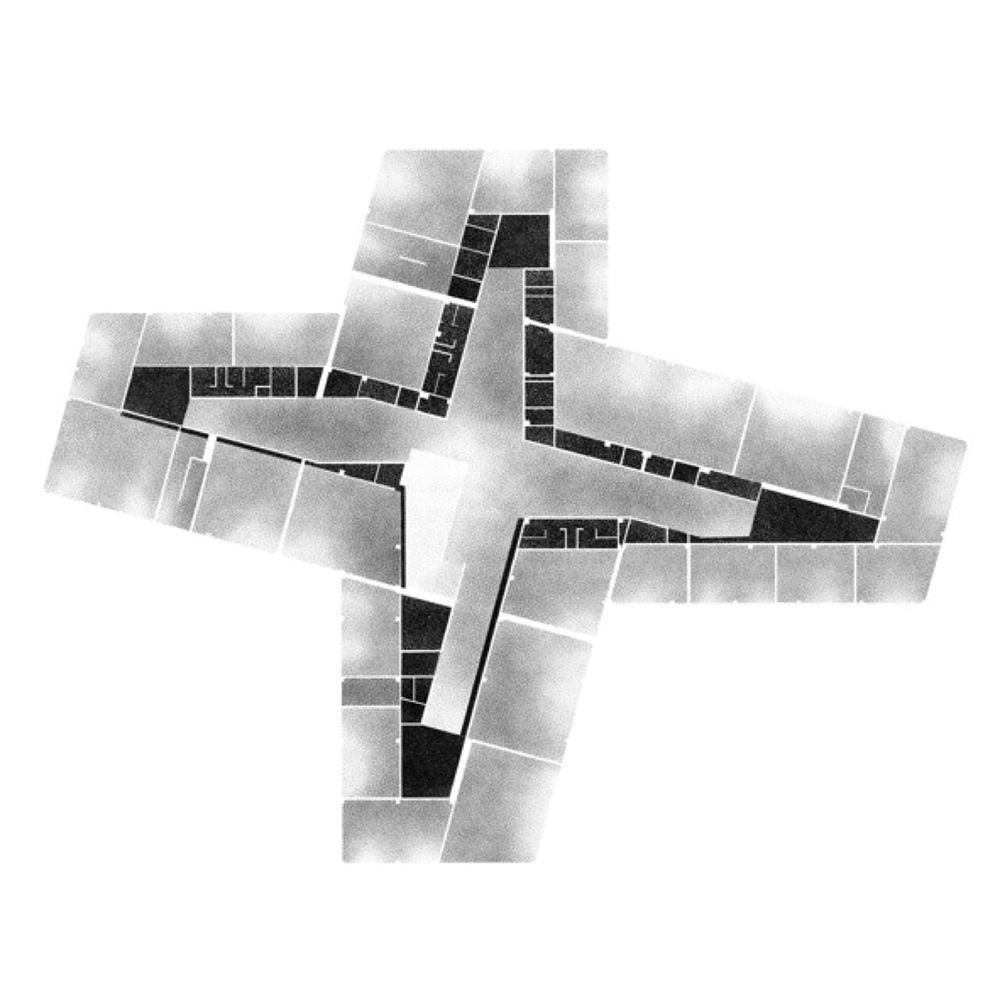
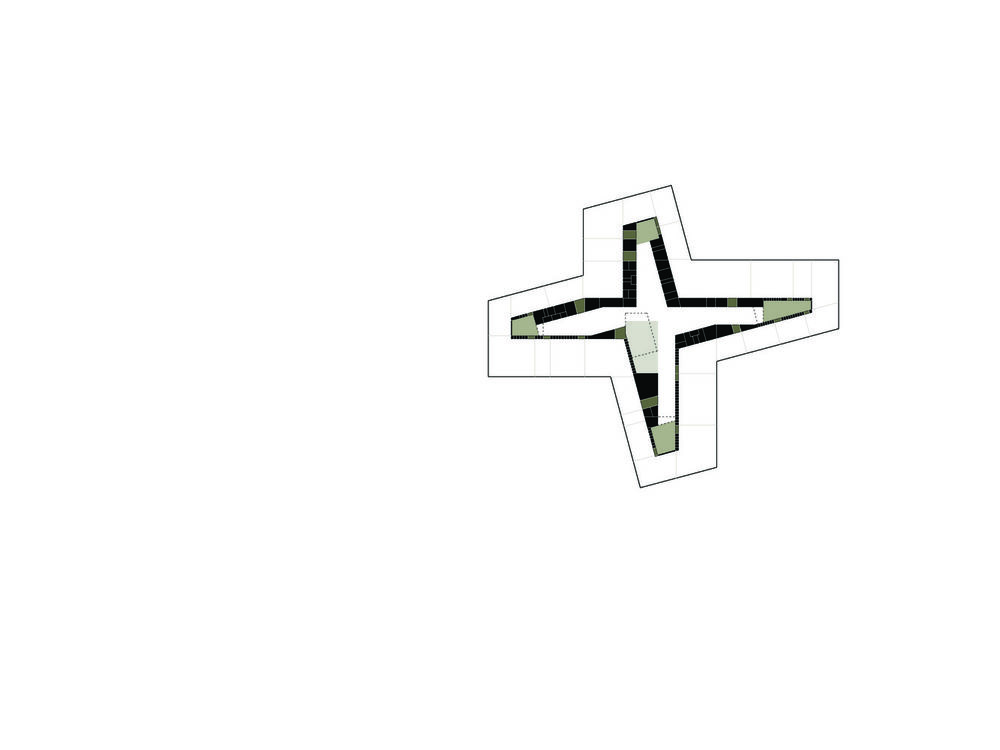


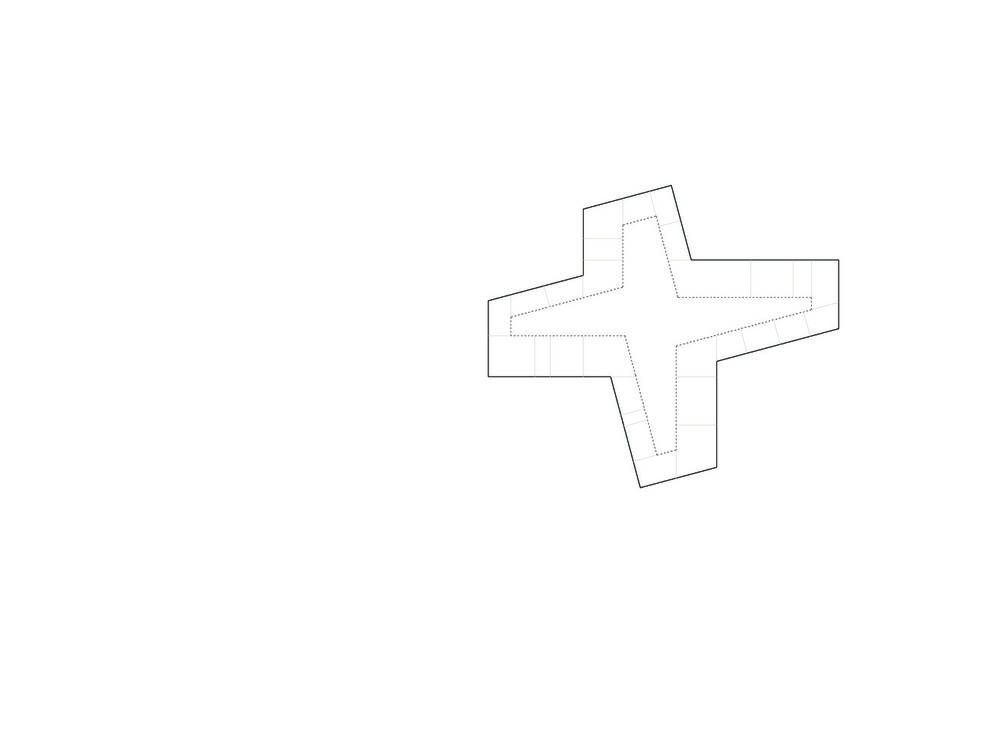

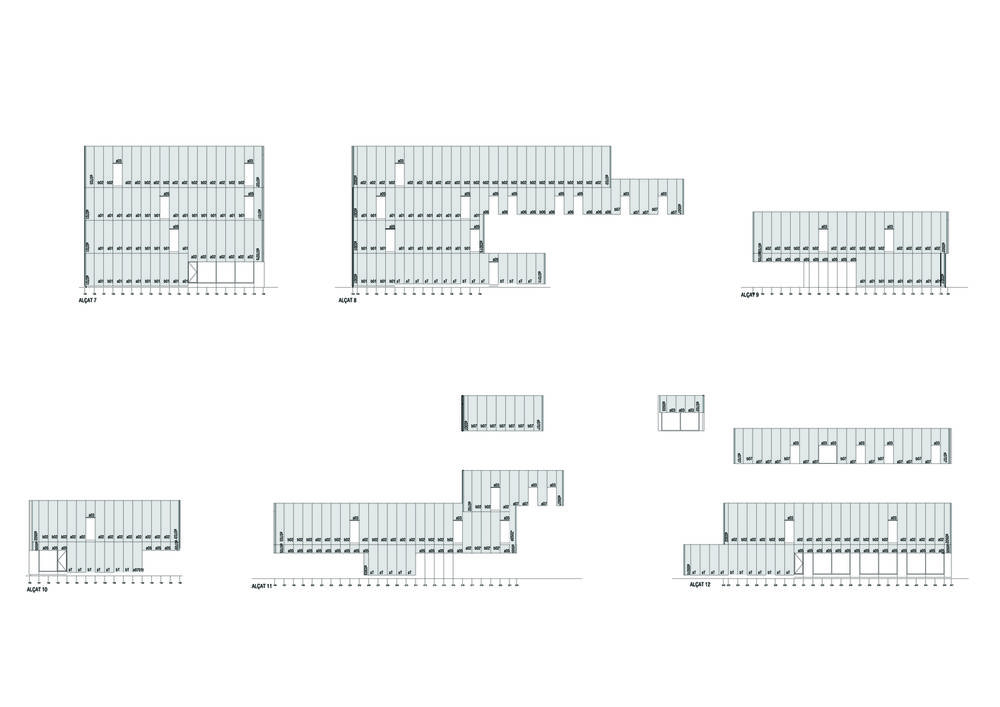
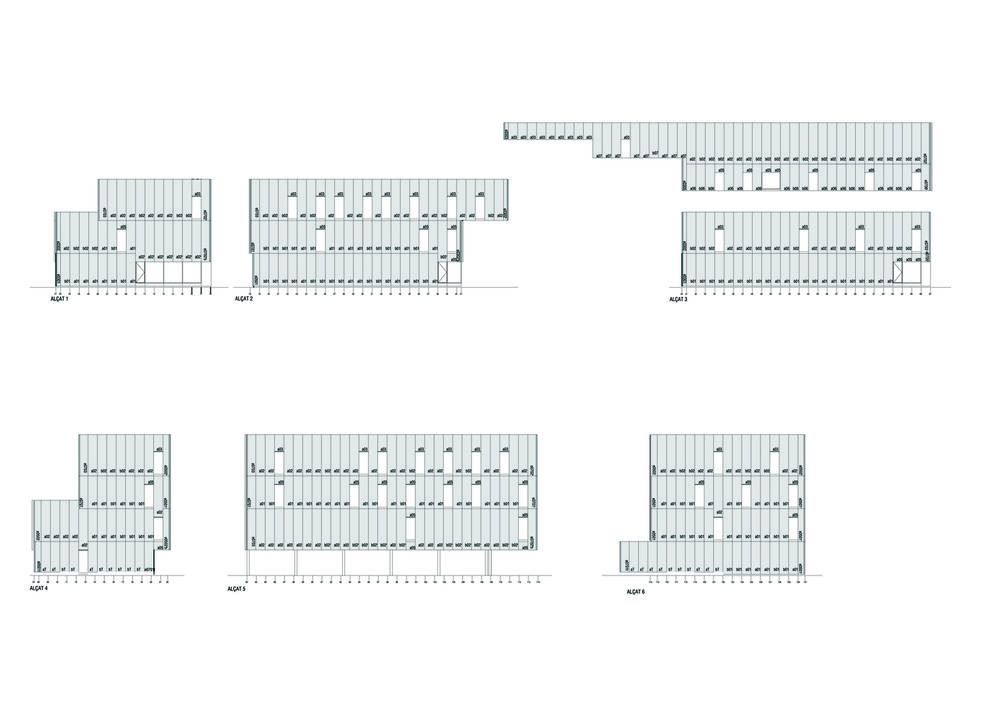
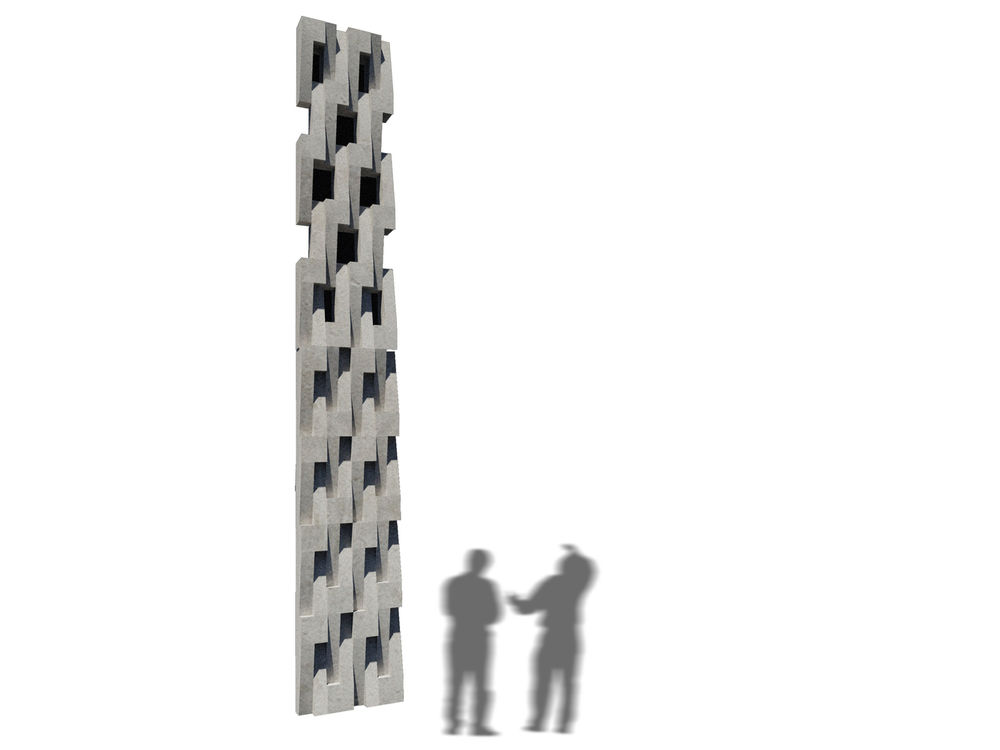
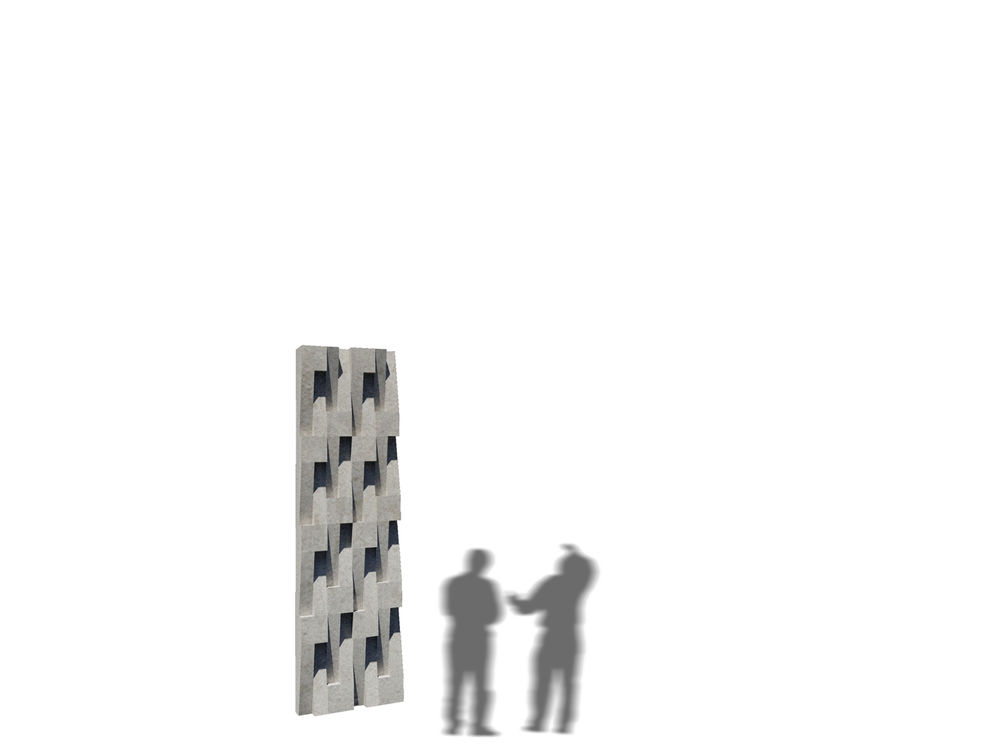
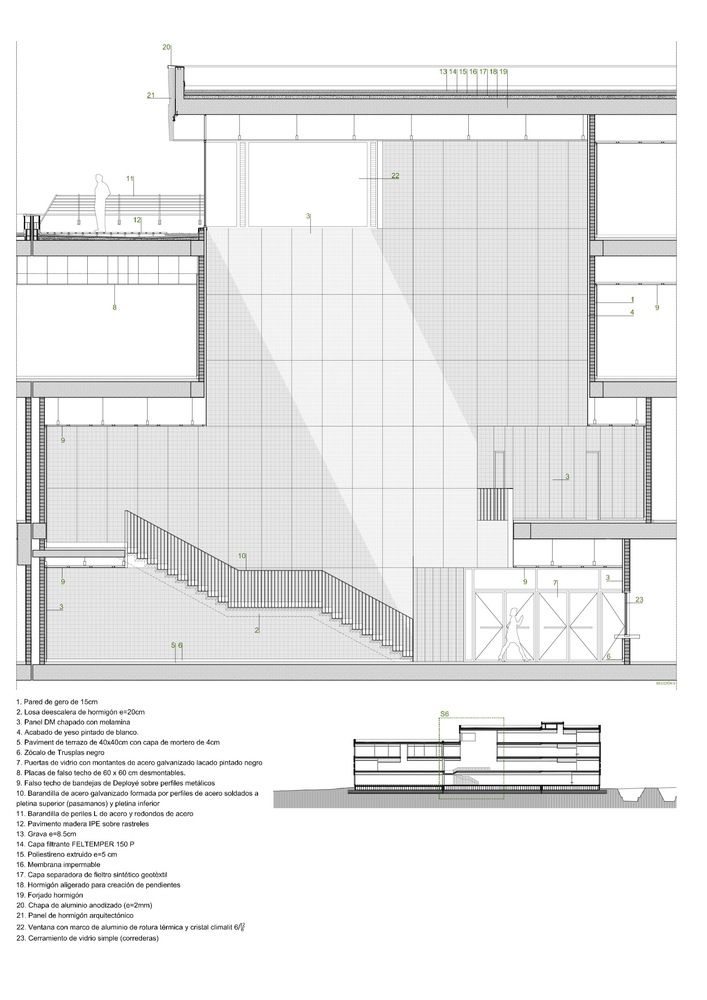
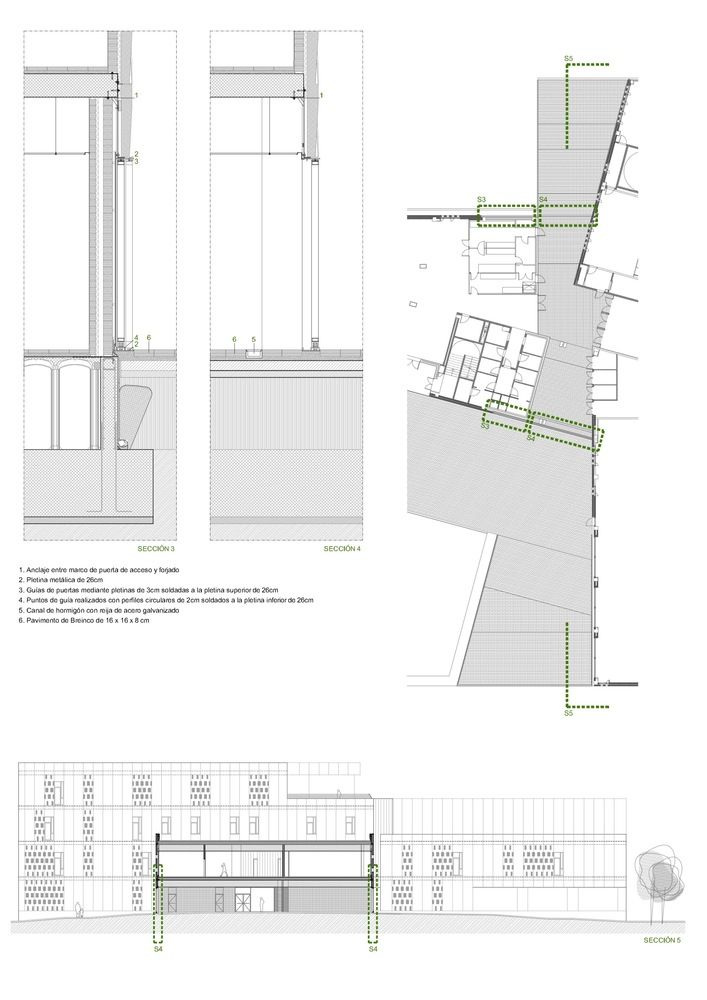
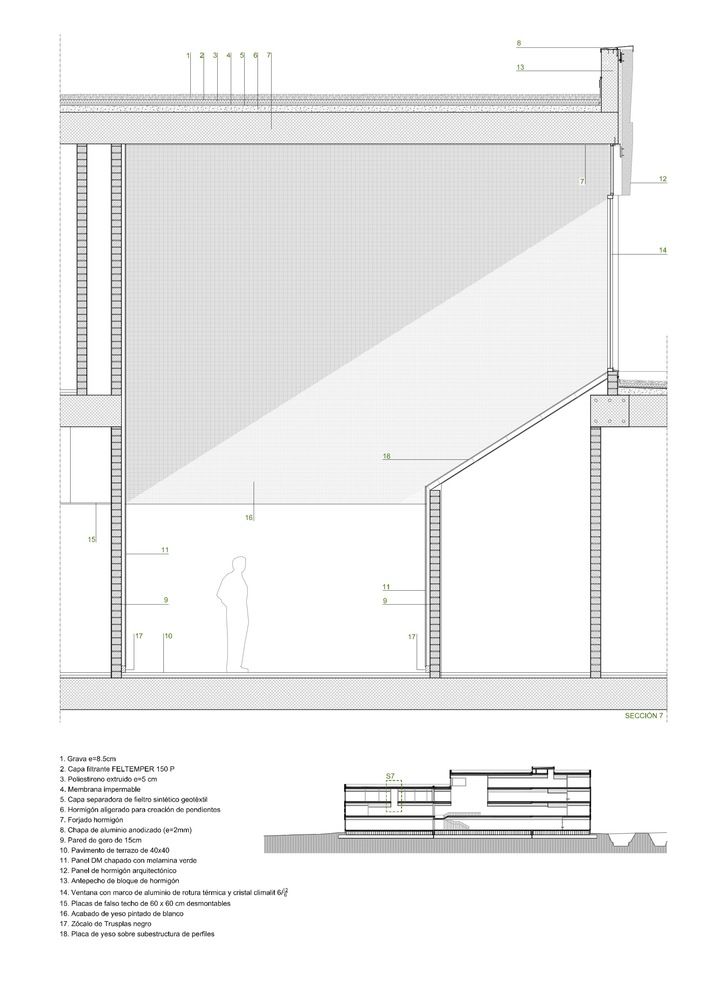
Architects Pere Joan Ravetllat, Josep Ferrando, Carme Ribas
Location: Av. de Remolins, 43500 Tortosa, Tarragona, Spain
Architect in Charge: Josep Ferrando + Pere Joan Ravetllat + Carme Ribas
Area: 10000.0 m2Project Year: 2011
Photographs: Pedro Pegenaute

